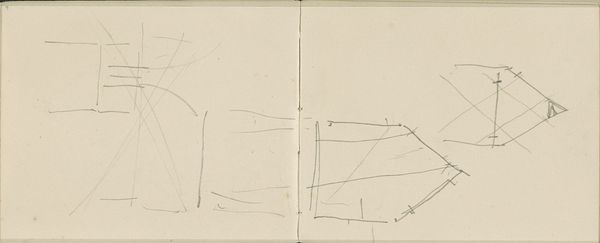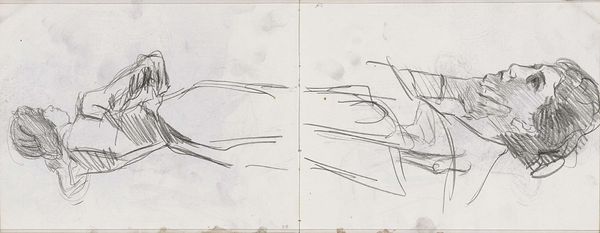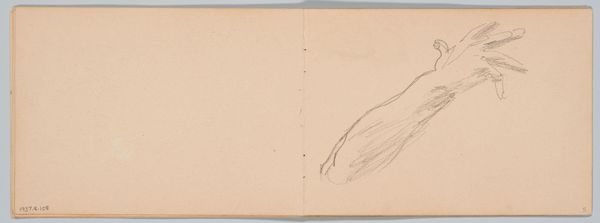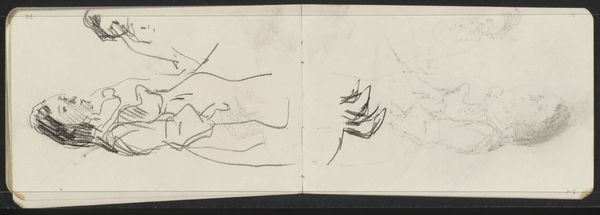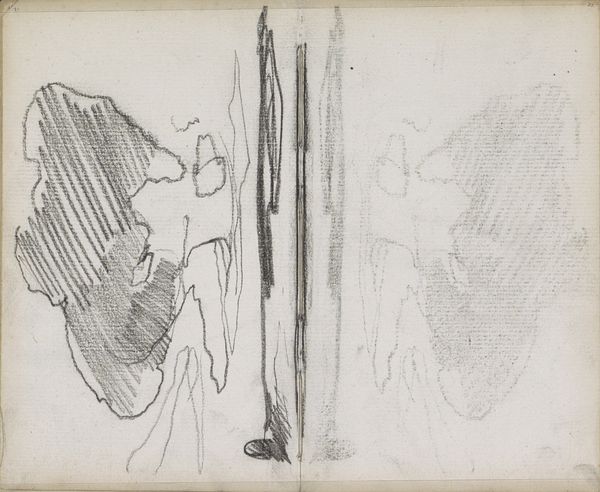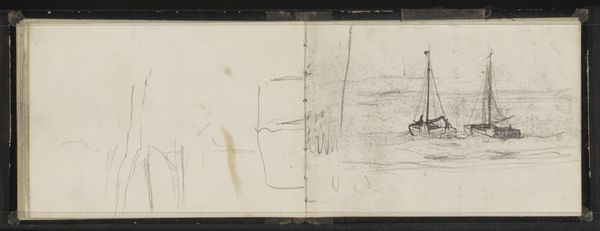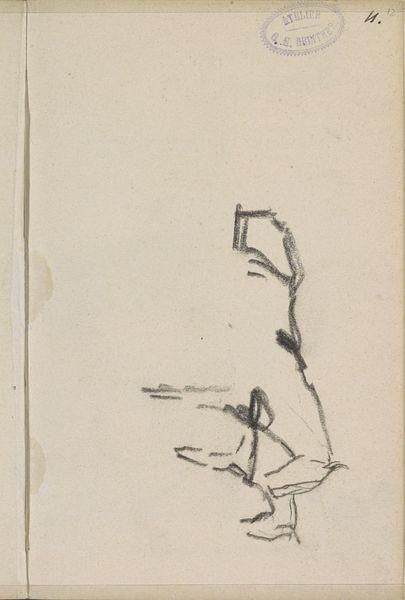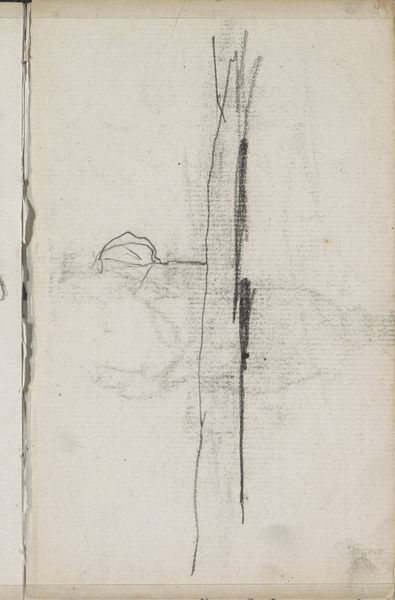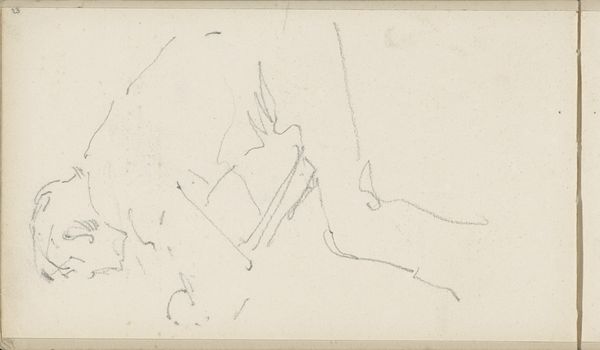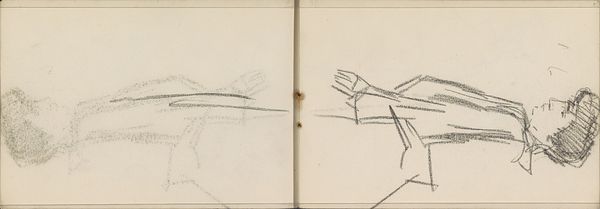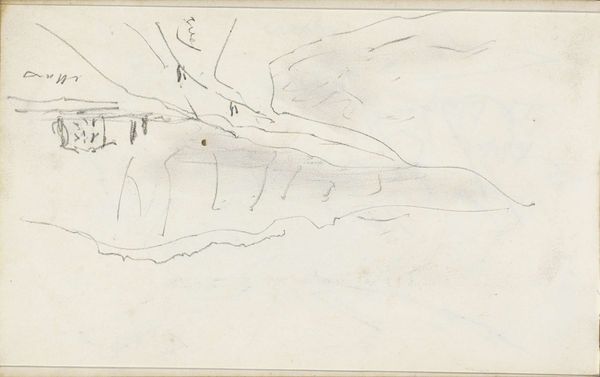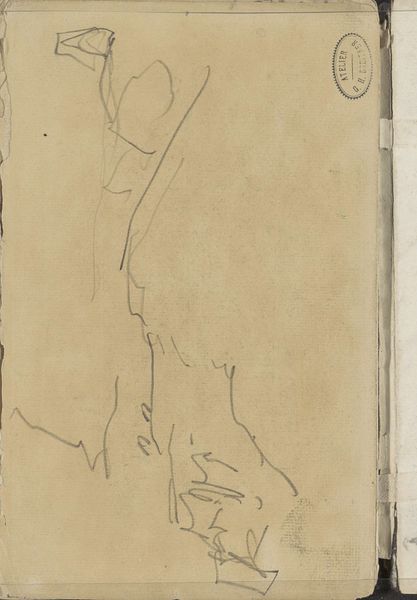
drawing, pencil
#
portrait
#
drawing
#
quirky sketch
#
incomplete sketchy
#
figuration
#
personal sketchbook
#
idea generation sketch
#
sketchwork
#
ink drawing experimentation
#
pen-ink sketch
#
pencil
#
sketchbook drawing
#
sketchbook art
#
initial sketch
Copyright: Rijks Museum: Open Domain
Curator: Here we have a double-page sketchbook drawing by Isaac Israels, entitled "Vrouwenhoofd en een staande vrouw, in profiel" which translates to "Woman's Head and a Standing Woman, in Profile." Though the work is not definitively dated, it’s estimated to come from between 1875 and 1934. Editor: My immediate reaction is a sense of intimacy and transience. It feels like catching a glimpse of private moments, sketched in haste. The lines are so raw and suggestive rather than precise. Curator: That's quite perceptive. Israels was very interested in depicting modern life and used drawing as a tool for capturing spontaneous moments. These sketches could have been preparatory works for paintings, or simply observations of women he saw in daily life, perhaps in his studio, or even the theater. Editor: And you see the traces of the artist’s hand— the smudges and incomplete lines almost invite the viewer to participate in the creative process. It reminds me of how women were often represented, not as fully formed individuals, but as studies or ideas in the minds of male artists. Is this an embrace, critique, or continuation of that history? Curator: That's a key point. The informality challenges traditional portraiture, suggesting a shift away from the formal and idealized representations of women. Israels moved within artistic circles that were pushing back against academic art, and his work often captured a sense of realism and immediacy. Think about how the figure on the right is in contrapposto -- it is a classical art concept adapted here as a starting sketch. Editor: But how does his social context as a privileged white man impact how he sees and portrays his female subjects? I mean, the drawing gives freedom to the observer while denying full clarity to the subjects themselves. The work sits at a crossroads—celebrating modern life, yet perhaps replicating existing power structures of seeing and representation. Curator: These sketchbook pages allow us insight into the artistic process. You’re correct; they underscore the role of the artist’s perspective in shaping our understanding. The interplay between intention, social context, and artistic execution is essential. Editor: Looking at this today, it encourages me to really reflect on how far we’ve come, but also how much further we need to go in deconstructing the male gaze in art, so we can see ourselves fully realized in our portraits. Curator: Indeed. By acknowledging the sketch in the context of its creation and social ramifications, we deepen our experience with this captivating drawing.
Comments
No comments
Be the first to comment and join the conversation on the ultimate creative platform.
